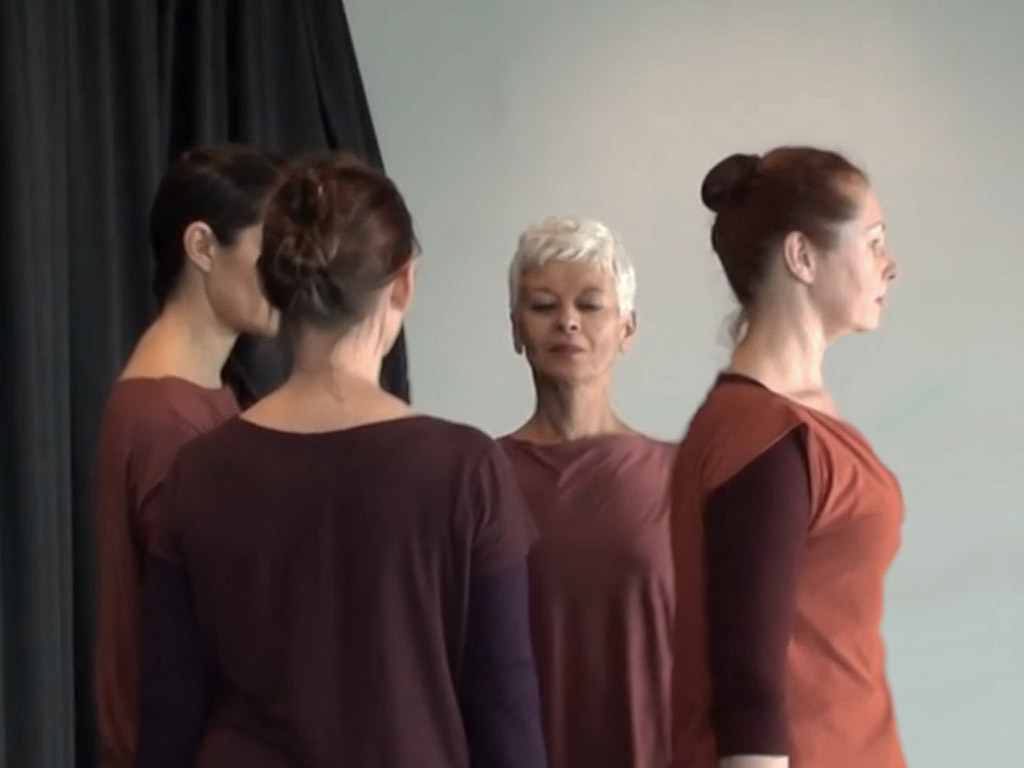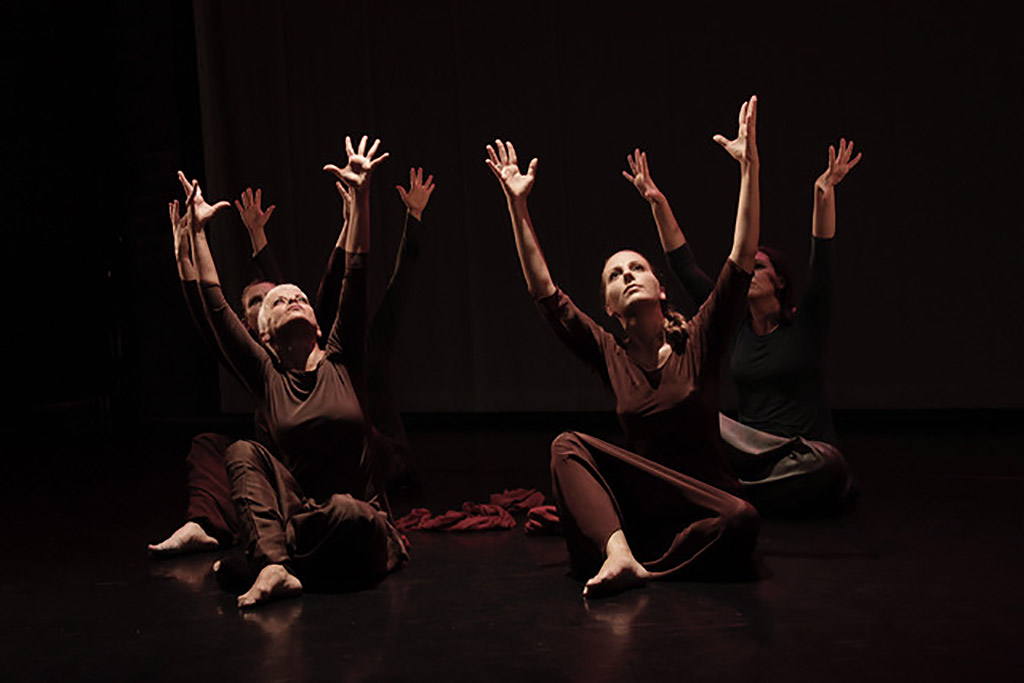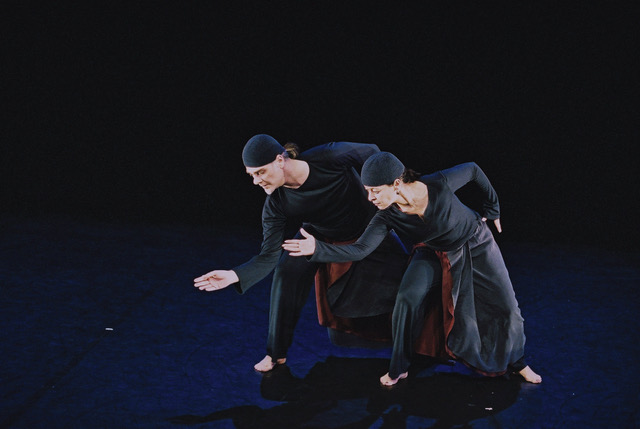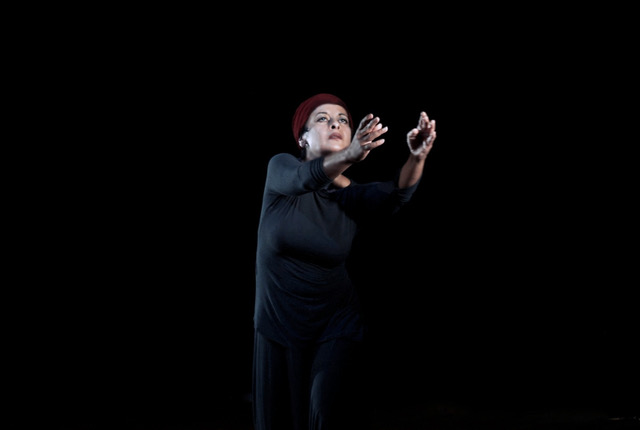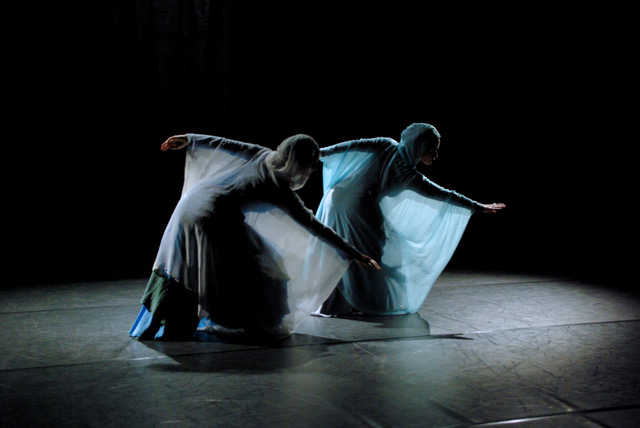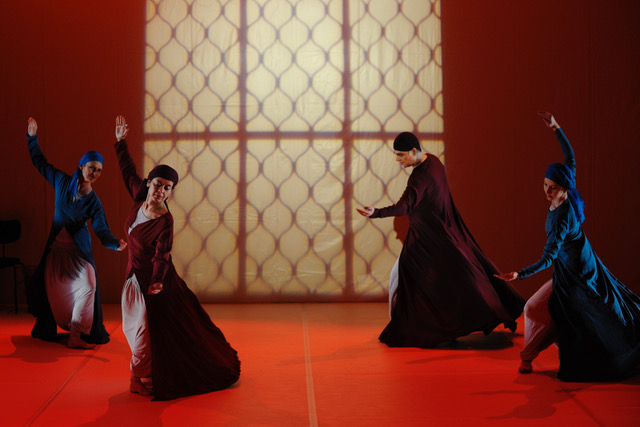Performer
Suraya Hilal is highly regarded as one of the most unique artists of our times. Drawing upon the essence of her roots and culture, she has created a new dance form within the contemporary world. Her research, innovation and theatrical work reveals a true integration of Eastern and Western elements, culminating in a unique and holistic language system. Today, the totality of her choreographic and educational work is known as Hilal Dance, a comprehensive and progressive dance form.
Born in Cairo where dance was part of a social grace, Suraya Hilal began formal study of dance when she went to the USA for higher education in her teens. At university, she studied biology, psychology and at the same time she accessed the university dance department. There she began her research, study and analysis of modern western dance in relationship to the eastern forms; slowly developing her own body practice and technique and later deepening her experience by training in Yoga and the Martial arts. Afro-American dance was another passion which led her to train at the Catherine Dunham School. Suraya graduated in special education and later taught adolescents with special needs in the USA and the UK. She left America and travelled widely in the Middle East and Africa. This was a great opportunity for further research and study in the music and dance forms of her native culture.
Suraya Hilal’s performance career began at the Edinburgh Festival in 1981 and 83 as a solo artist and went on to tour in small venues in England. Soon after, between1983-85, she made a breakthrough on the big stage with a live eight-piece music ensemble in “Return of the Spirit” at Commonwealth Institute and later with five nights at the Place Theatre, London. This marked the beginning of Suraya’s collaboration with musicians especially with the renowned percussionist, Ibrahim el Minyawi, which resulted in a shared artistic relationship that spanned over many years.
“What Hilal has done is to master a technique of this style to perfection … her treatment of this style has its own purity and nobility, reflecting the ritualistic origins. “ The Scotsman
“The rapport between dancer and musicians was an added joy. Suraya Hilal is a choreographer of subtlety and high skill and a dancer of quality. An exhilarating evening … The Times, John Percival, at the Commonwealth Institute 1983
Between 1989/93 Suraya continued with well funded grants from the British Arts Council where she established Suraya Hilal Company and created many productions with musicians. Among the major works were: “Celebration of the Nile”, “Jewels”,”Black Spring”, “Divine Rites”, “Colours of Cairo”, “The Beloved”, performed at the Almeida theatre, Queen Elisabeth Hall, Sadlers Wells and others. These programmes toured in the UK and the main capitals of Europe to full houses and rave reviews. Suraya’s works at that time celebrated the expertise of live music and its integration with dance in a complete union that was never seen before. Suraya presented a new interpretation of traditional roots. The success was in its aliveness and unique way of staging ethnic dance and music. Suraya in these programmes also, revealed elements of innovation that began in Edinburgh and continued as a part of her enduring experimental endeavours.
“The evening was dominated by swirling colour, curious sound and exhilarating movement…it had humour, exciting choreography and a wide range of emotional expression to commend it.” The Arts Guardian on the Celebration of the Nile, 1989
Throughout her profession, Suraya Hilal continued to collaborate with international composers, musicians, dancers and artists from different fields. Among these collaborations was with polish theatre director, Halina Witek in Holland in 1984, which produce a unique modern piece called “Sahirah”.
With “Dance Mosaic”, Suraya made a choreographic comparative study in collaboration with Kathak and Flamenco artists, presenting the work at The Place in 1988. Returning to her solo research, Suraya collaborated with the composer, Peter Chowdry and his seven-piece chamber orchestra. Together they produced a forty minute contemporary piece called “Journey to Light” with an intense highlight between the solo violinist and Suraya; performed at the Queen Elizabeth Hall in 1996.
Over the years, Hilal’s work has been the subject of documentaries by Channel 4, ITV, the BBC and interviews on international television. One was a specially commissioned ten-minute piece made by director Terry Braun for BBC 2 the Late Show, a unique choreographic and narrative piece interpreting the song of “al Atlal” by the legendary singer Um Koulthum. Hilal has also given many radio interviews, in particular at BBC World Radio and Woman’s Hour Radio 4. Granada television produced a documentary called “The Return of the Desert Dancers.” Also in the same years, Hilal received the Digital Equipment award and a Dance Umbrella Time Out Award in 1989, and in 1986 a Greater London Arts Dance Award.
Returning to Cairo to the baladi (urban folk) people’s life and music, Suraya created “Spirit of the Heart”, a full programme inspired by the remarkable voice of singer Ruh el Fuad and accompanied by seven musicians from the original school of baladi. It was premiered at Queen Elisabeth Hall, London and in Manchester in 1997, later touring in the main festivals and theatres of Europe. The Spirit of the Heart creation was a landmark in Suraya’s choreography, revealing essential connectivity and grounding; the beginning of the expansive language of Hilal Dance.
“The eyes of the house clung to Suraya Hilal with her magnetic charisma.”
Kopenhagen, Information 1997 in Spirit of the Heart
“Hilal through her choreographies expresses the depth of Egyptian culture whether from the South or the North. .She has succeeded through movement to combine cultural/artistic expression with social mores.” Al Ahram, 1997
The Hilal Dance form found its completion as a whole system of movement in 2000, emerging from the depths of Suraya’s choreography, teaching and practice. Following this amazing revelation was the creation of Al Janub, with three dancers and Sai’di musicans; a co-production with Tanzhaus nrw in 2002, an important step in Hilal’s clarification of her new idiom. Al Janub is a coherent integration of pure movement, music and archetypal imagery, bringing forth a new and contemporary presence to the Upper Egyptian music and dance.
“…the Company, moves through space with upright, elegant steps. Moods change with the music and the authentic, multi-layered garments, and the seemingly feather-light solos, duos and trios are filled with dramatic tension. The canon of movement of the dance is so rich and complex that the choreography dispenses with the use of scenery-and rightly so. Suraya Hilal has a love of the abstract and purist dance.” Westdeutsche Zeitung- B.Trouwborst, Feb, 2002
The collaboration with Alessandro Bascioni in 2004 produced the creation of “Aseel”, a piece with three musicians and the two dancers, (Alessandro and Suraya). They worked in an exciting duo which featured a new interplay of energies in a “give and take”, between each other and the three excellent musicians. This work revealed a choreographic departure into modern territory. The piece was featured in two years running at the Tanzhaus nrw Düsseldorf, 2004/05.
“In Khud w’hat, a duo performed by Hilal and Bascioni … the pair created what might perhaps be called harmony at a distance. The contact between the two remained limited to the eyes throughout, their bodies never touching. But the movements of the woman mirrored those of the man and vice versa, an unaffected, joyful cooperation evolved, no game of contradictions pressing for resolution”. Westdeutsche Zeitung 2004
Suraya’s love and fascination for the string instrument, the Oud, inspired her creation, “Oscillations”, in 2008. The sounds of this instrument vibrate crystal clear notes of pure intellect, while the wood resonates with warmth of heart was the perfect impulse that produced her choreographic response. With the refined music of Joseph Tawadros, Australian oud player, Suraya and the dancer, Sarah Hamilton undertook a journey of discovery into the deeper body language; a further stripping down to essence of every movement. Coupled by the clear and evocative sounds of the solo instrument, the choreographies revealed the essential elements of energy containment and minimalism in searching for a point of balance. Premiered at Rothebul Theatre in Stuttgart and shown at Tanzhaus nrw, and restaged in 2009 in Casula, Sydney, Australia.
Oscillation “…Absolute poetry” Stuttgarter Nachrichten
In 2008, Suraya continued to develop her response to the classical court instruments and the voice of the 1940’s song with the creation of “El Mizan” The piece brings to life Suraya’s choreographic sensibilities set to the refined and sophisticated Arab court music of 18th and 19th century. In this collaboration, Suraya Hilal and Alessandro Bascioni with two dancers and a live classical ensemble perform this piece as part of the Oscillation programme presented in Düsseldorf and at the Rotebühl Theatre in Stuttgart.
Suraya Hilal’s work in Australia (2011) produced “Alchimia”, an exploration of the theme of “the critical mass”; how we produce change, energetically, with only one small element, one thought, one motion. A person who dares to make a difference with a new idea which takes hold, and develops progressively into a title wave that engulfs the masses; soon, all become united in thought and intention. This naturally leads to irrevocable change, to revolution!
Suraya instinctively realised the ideas for Alchimia’ during the revolution of the Arab Spring of 2011; at that time, she was invited for a residency in Canberra to create new work for the Company with the Australian dancers. The concepts of this work were inspired by the poignant and progressive music of Palestinian brothers Le Trio Joubran; their modern compositions presented the perfect score to realise the Alchimia’ energy. Premiered Belconned Art Centre in 2011 and Tanzhaus nrw in 2013.
The Festival dei Popoli in Florence in 2013 commissioned Suraya’s programme “Beloved Country” where she is accompanied by her Ensemble of five outstanding musicians. Together they produced a resounding and stirring music that celebrates the urban people’s art. Through dance and music, the drama of the baladi people unfold in a kaleidoscope of aesthetics, stories told through an abstract and powerful movement language.
“A performance of high emotional impact.” LA NAZIONE 2013
“The Cage”, created for performance in Rome, a solo piece by Suraya Hilal explores the processes within our minds that create our limitations, even within a beautiful cage. The piece, set to the intensely beautiful score from the Le Trio Joubran, reveals the many stages of struggle; contraction-expansion, collapse, rising, transcending and breaking barriers.
“In The Cage the body of Hilal, hidden by a mother of pearl veil, exalts the essence, the authenticity and the expressive power of this magnificent dance.“ GB.Opera
Suraya Hilal’s solo work “Winds of Change” is an eloquent and stirring physical delineation of the impalpable nature of the human spirit. The timeless flow of movements depict both the elements of water and air which animate phases of emotions in an ethereal and yet, emphatic way.
Suraya’s aqueous movements at times are drifting, swirling and twirling upwards as if a consciousness from deep is aspiring upward towards the light. At other times, her movements of swift gliding, rolling and shifting are like the wind with unfixed moments of stillness and ending the dance with a final curling down in suspiration. Showcased at Tanzhaus nrw and at Villa Torlonia Theatro Roma 2017.
In Suraya’s latest work, the elements of “Unspoken” are line, force, bodies, energy which, contribute to create a choreography striving to represent a drama, in that the individual energy of the single body is multiplied by duos, trios and choral movements. The intensity of a dialogue between movement, space and music explores the rise and fall of flow, pausing almost exploding at times and yet underneath all the activity lies an unspoken calm, or suppression. The quintessential music of Le Trio Joubran unleashes the vehemence of the piece, created for four dancers in a choreographic laboratory supported by the Canberra Dance Theatre, (2017).

